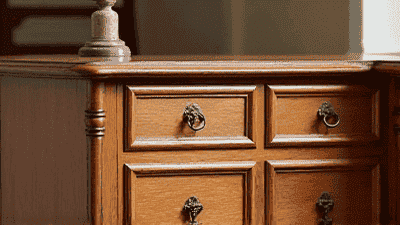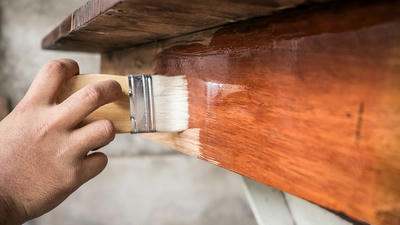The Best Ways to Remove Stains from Upholstered Furniture

Upholstered furniture is a popular choice in many homes due to its comfort and aesthetic appeal. However, its soft surfaces are also prone to stains and spills, which can be a headache for homeowners. Whether it’s a coffee spill, pet accident, or a child’s craft project gone awry, knowing how to effectively remove stains from upholstered furniture is essential for maintaining the beauty and longevity of your pieces.
Understanding Upholstery
Before diving into stain removal techniques, it’s important to understand what upholstery is and the different types of fabric used in upholstered furniture. This knowledge will help you choose the right cleaning methods and products.
What is Upholstery?
Upholstery refers to the materials used to pad and cover furniture. This includes the framework, springs, padding, and fabric or leather covers. Upholstered furniture is often more comfortable than non-upholstered pieces, making it highly sought after for living rooms, dining areas, and bedrooms.
Types of Upholstery Fabrics
Natural Fabrics: These include cotton, linen, wool, and silk. They are breathable and soft but can be more susceptible to stains and fading.
Synthetic Fabrics: Polyester, nylon, and acrylic are common synthetic materials that are often used for upholstery. They tend to be more durable and stain-resistant, making them easier to clean.
Leather: While leather is not fabric, it is a popular upholstery choice. It offers a luxurious look but requires specific cleaning methods.
Microfiber: This synthetic fabric is made up of very fine fibers and is known for being both durable and easy to clean, which is why it is often used in families with children or pets.
Stain Susceptibility
Different fabrics have varying levels of stain susceptibility. Natural fabrics may absorb stains more readily, while synthetic fabrics often have treatments that make them more resistant to spills. Understanding the type of upholstery you have is crucial for effective stain removal.
Common Upholstery Stains

Stains on upholstered furniture can come from a variety of sources. Here are some of the most common types:
Food and Beverage Stains: Spills from snacks, drinks, and meals can leave behind residue and color.
Grease and Oil Stains: These can occur from food, lotions, or even body oils.
Ink Stains: Accidental pen marks or ink spills can be particularly stubborn.
Pet Accidents: Urine, vomit, and other pet-related stains require special attention due to odor and bacteria.
Blood Stains: These require prompt action due to the proteins that can bond with the fabric.
Mold and Mildew: These can develop in damp conditions and can be harmful to health as well as difficult to clean.
Preparing to Clean Upholstered Furniture
Gathering Supplies
Before you start removing stains, gather the necessary supplies to ensure you’re well-prepared. This includes:
Cleaning Solutions: Consider using a combination of mild soap, white vinegar, and baking soda. Depending on the stain, specialty cleaners may also be necessary.
Microfiber Cloths: These are ideal for blotting and wiping stains without scratching the fabric.
Soft Brush: A soft-bristled brush can help loosen dirt and grime from fabric surfaces.
Spot Cleaning Brush: This can be helpful for targeted stain removal.
Spray Bottle: Use this for mixing and applying cleaning solutions.
Vacuum Cleaner: A vacuum is essential for removing loose dirt and debris before tackling stains.
Paper Towels: These are useful for blotting and absorbing excess liquid.
Gloves: Wear gloves to protect your hands when using cleaning products.
Assessing the Stain
Identifying the type of stain you’re dealing with is crucial for effective removal. Here are steps to assess the stain:
Identify the Source: Determine what caused the stain. Knowing whether it is a grease stain, ink stain, or something else will influence your cleaning approach.
Check the Fabric Care Instructions: Most upholstered furniture comes with care instructions. Refer to them to determine the safest cleaning methods.
Conduct a Spot Test: Before applying any cleaning solution, conduct a spot test on an inconspicuous area of the upholstery to ensure it does not cause discoloration or damage.
Step-by-Step Stain Removal Techniques

Now that you are prepared, let’s explore effective techniques for removing various types of stains from upholstered furniture.
1. Food and Beverage Stains
Food and beverage stains are among the most common encountered. Here’s how to effectively tackle them:
Method for Food Stains
Blot Immediately: As soon as the spill occurs, use a clean cloth or paper towel to blot (not rub) the area. This will help absorb as much of the stain as possible.
Prepare a Cleaning Solution: Create a solution using one tablespoon of dish soap mixed with two cups of cool water.
Apply the Solution: Using a clean cloth, dip it into the soapy water, wring it out, and gently blot the stained area. Work from the outside towards the center to avoid spreading the stain.
Rinse: Dampen another cloth with clean water and blot the area to remove any soap residue.
Dry: Pat the area dry with a clean, dry cloth and allow it to air dry completely.
Method for Beverage Stains
For more challenging beverage stains, like coffee or red wine:
Blot Immediately: Blot the area with a clean cloth to absorb excess liquid.
Create a Vinegar Solution: Mix one part white vinegar with two parts water.
Apply the Solution: Use a clean cloth to dab the vinegar solution onto the stain, continuing to blot until the stain lifts.
Rinse and Dry: Rinse with a clean, damp cloth, then dry as mentioned previously.
2. Grease and Oil Stains
Grease and oil stains can be challenging, but they can be tackled effectively.
Method for Grease Stains
Blot Excess Grease: Use a paper towel to gently blot the stain, absorbing as much grease as possible.
Sprinkle Baking Soda: Cover the grease stain with baking soda and let it sit for at least 15 minutes. It helps absorb the grease.
Brush Off Powder: After the time has elapsed, gently brush off the baking soda with a soft brush.
Apply Dish Soap Solution: Mix one tablespoon of dish soap with two cups of warm water. Using a clean cloth, apply the solution to the stained area, gently blotting.
Rinse and Dry: Rinse with a cloth dampened with clean water and dry the area thoroughly.
3. Ink Stains
Ink stains can be persistent and may require a mindful approach.
Method for Ink Stains
Blot with Rubbing Alcohol: Using a cotton ball or a clean cloth, apply rubbing alcohol directly to the ink stain. Blot gently without rubbing, as this can spread the ink.
Work from the Outside In: This method prevents the stain from enlarging.
Rinse with Water: After the ink has lifted, dampen a clean cloth with water and blot the area to remove any alcohol residue.
Dry: Pat dry with a clean cloth and allow the area to air dry.
4. Pet Stains
Dealing with pet accidents requires special care due to the potential for odors and bacteria.
Method for Pet Stains
Blot Excess: Immediately blot up as much of the stain as possible with paper towels.
Mix Vinegar Solution: Create a mixture of one cup of white vinegar and one cup of water to neutralize odors.
Apply the Solution: Use a clean cloth to apply the mixture, and blot until the stain lifts.
Neutralize Odors: Sprinkle baking soda over the area after treating it with vinegar; this will help absorb any lingering odors.
Vacuum Once Dry: Allow the baking soda to sit for several hours or overnight, then vacuum it up.
5. Blood Stains
Blood stains require prompt attention due to their protein content.
Method for Blood Stains
Use Cold Water: Rinse the area with cold water immediately to flush out the blood.
Apply Salt Paste: Create a paste of salt and cold water, and apply it to the blood stain. Allow it to sit for 30 minutes.
Rinse and Blot: Rinse again with cold water and gently blot the area dry.
6. Mold and Mildew Stains
If you have upholstered furniture that has developed mold or mildew, it’s crucial to act quickly to treat it.
Method for Mold and Mildew Removal
Vacuum the Area: Use a vacuum cleaner with a HEPA filter to remove loose spores before treating the stain.
Create a Vinegar Solution: Mix one cup of white vinegar with one cup of water.
Apply the Solution: Spray the solution onto the affected area. Let it sit for about 15 minutes.
Scrub: Gently scrub the area with a soft brush to lift the mold.
Rinse and Dry: Wipe with a damp cloth and allow to air dry completely.
Preventing Stains on Upholstered Furniture
While knowing how to remove stains is essential, prevention is always better than cure. Here are some tips to help prevent stains from occurring in the first place:
1. Apply Fabric Protector
Consider applying a fabric protector spray designed for upholstery, which adds a layer of protection against spills and stains.
2. Use Coasters and Placemats
To prevent food and drink spills from staining your upholstery, be diligent about using coasters for beverages and placemats for food.
3. Regular Cleaning
Frequent vacuuming can help eliminate dirt and debris that can wear out upholstery over time. Place a dining table runner or cover on furniture in high-traffic areas to protect against stains.
4. Train Pets
If you have pets, consider training them to avoid jumping on furniture or using furniture covers to protect upholstery from fur and accidents.
5. Professional Cleaning
Schedule professional upholstery cleaning every year or so to keep furniture looking fresh and to address any hidden stains that may not be visible.
When to Seek Professional Help

While many stains can be treated at home, there are times when seeking professional help is the best course of action. Here are scenarios where you may want to consider professional cleaning:
Severe Stains: If the stain is particularly large, stubborn, or has been set for a long time, professional services can use specialized techniques and equipment to remove it.
Delicate Fabrics: For delicate upholstery fabrics such as silk or certain suedes, professional cleaning is often the best option to avoid damage.
Structural Issues: If your furniture has developed structural weaknesses due to wear and tear, a professional upholsterer can provide repairs and restoration services.
Conclusion
Removing stains from upholstered furniture doesn’t have to be a daunting task. With the right knowledge, tools, and techniques, you can tackle even the toughest stains effectively. It is essential first to assess the type of stain and fabric, plan a cleaning method, and act promptly.
In addition to the stain removal techniques detailed in this guide, remember the importance of preventive measures and regular maintenance to keep your upholstered furniture looking fresh and new. By following these guidelines, you can maintain your upholstered pieces and ensure they continue to add comfort and beauty to your home for years to come.


